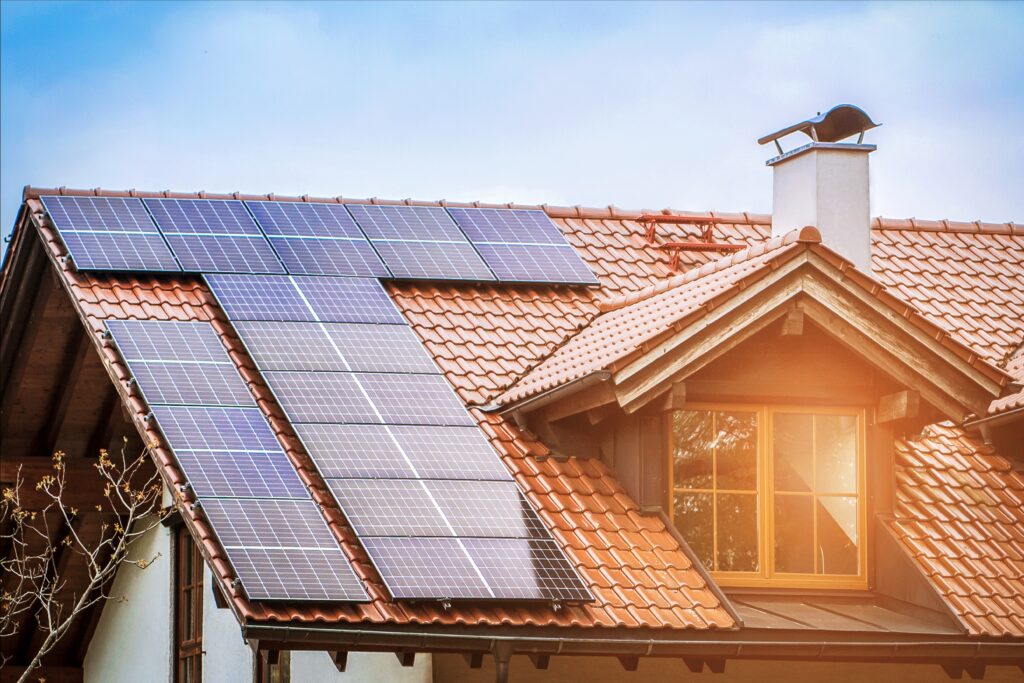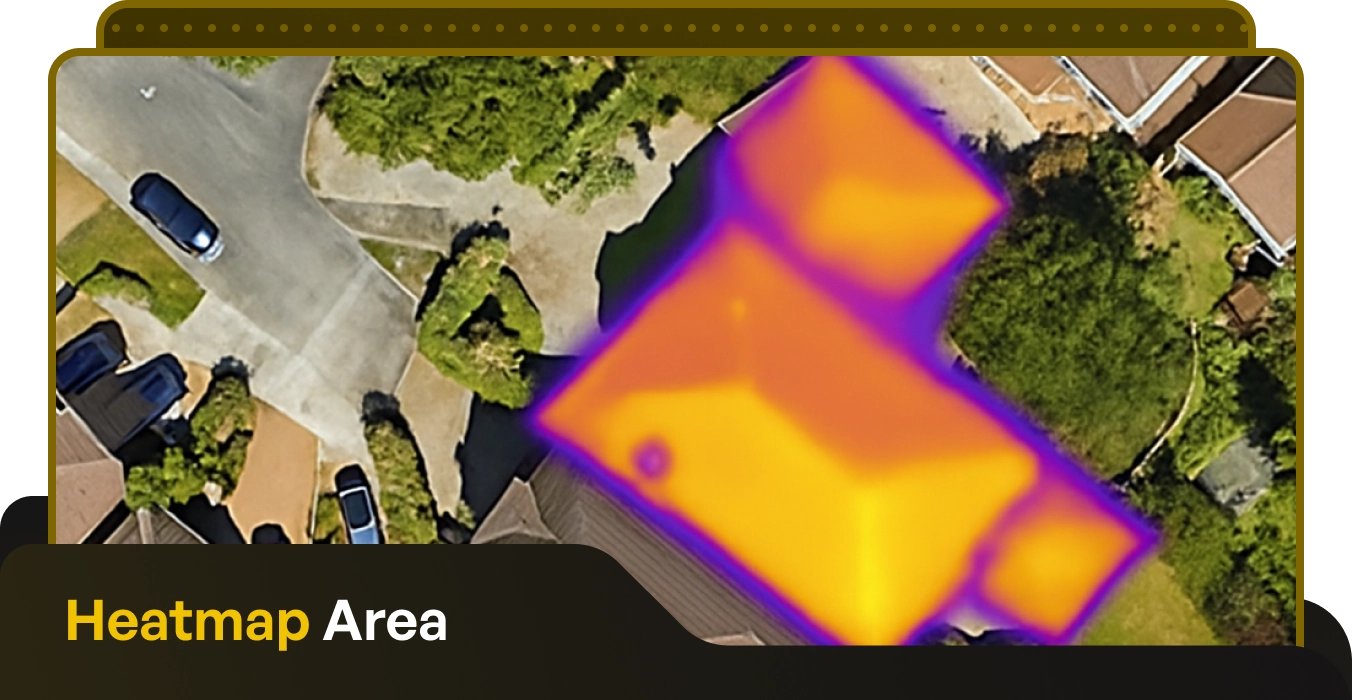Table of Contents
How Many Solar Panels Do I Need in Ireland

Written by: Briain Kelly
Published: July 17, 2025
Last updated: December 2, 2025
Reading time: 4 mins
If you’re thinking about investing in solar panels in Ireland, then you might start by asking yourself how many solar panels you need for your home.
An average three-bedroom house in Ireland would probably need between 10 – 14 solar panels, depending on its electricity usage and other factors.
But this will vary greatly from home to home, and there is no answer for every scenario.
The best way to get an accurate view of how many home solar panels you need is by getting a survey of your home done by a qualified installer.
They will assess your roof, electricity usage, and local weather to design a system suited to your individual needs.
Below, we’ll take you through some of the factors which will go into determining how many solar panels are needed for your home in Ireland.
Factors Governing Solar Panel System Size
There are a number of environmental and technical factors which govern the amount of power produced by solar panels.
They must be considered alongside how much electricity you use and your consumption patterns to determine the size of the solar PV system best suited for your home.
Factors which should be taken into account include:
- Annual Electricity Usage: How much electricity your home uses in a year.
- Electricity Usage Patterns: What are the highest peaks of your home electricity usage, and when do they occur?
- The Size of Your Roof: How much space is available on your roof for solar panels.
- Your Roof Orientation: South-facing panels produce the greatest amount of electricity year-round.
- Hours of Sunlight: Where you live will affect how much sunlight your home receives throughout the year.
- Solar Panel Output: The power output of each individual solar panel will determine how many are needed to reach a desired PV system output.
- Solar Battery Storage: If you are planning to use battery storage to store excess power.
Solar PV System Size Based on Electricity Usage
As a rough rule of thumb, the solar panels for your home should aim to produce at least 75% of your annual electricity usage, aiming for up to 100%.
The average home in Ireland uses 4,200kWh of electricity each year, according to the CRU. This would mean that 10 – 12 solar panels could produce 75% of that amount.
Getting 14 or more solar panels could almost entirely match or exceed this average home’s electricity usage.
But not all homes are average, and different properties will have different electricity consumption.
| Home Type | Electricity Usage | Solar Panels Recommended |
|---|---|---|
| Apartment | 4,196kWh | 9 – 12 |
| Mid-Terrace House | 4,185kWh | 9 – 12 |
| End-Terrace House | 4,450kWh | 10 – 12 |
| Semi-Detached House | 4,648kWh | 10 – 13 |
| Detached House | 7,388kWh | 15 – 19 |
Dwellings using electricity as their main space heating fuel in 2023. Source: CSO
These are broad estimates for the number of panels required to match 75% – 100% of your electricity usage. This may differ depending on real world conditions for your home.
Estimating Electricity Usage
There are two aspects to calculating household electricity usage:
- Annual Usage: The total amount of electricity a household uses in a year. This can be easily gotten from the ESB if you have a smart meter.
- Peak Usage: The highest peak of electricity usage by a household during the day.
A solar PV system should be able to match the majority of your total annual electricity usage as set out above.
Ideally, the peak output of the solar panels on your home should also be capable of matching your peak electricity consumption in a day.
What direction does your roof face?
In Ireland, south-facing roofs receive the greatest amount of sunlight year-round. If your home has a south-facing roof, then that is the best place to put solar panels.
With an east-west facing roof, or even worse, with a north-facing roof, a greater number of panels will be required to deliver the same power output.
The Shape of Your Roof
Solar PV systems need to be designed to fit physically onto the roof of a house. On houses with straight, unbroken roof surfaces this is simple. But not all roofs are the same.
Roofs with corners, angles, skylight and dormer windows introduce design constraints that
The SEAI’s Code of Practice for solar installers requires that solar panels cannot be:
- Within 500mm of the edge or perimeter of the roof
- Within 200mm of the peak of the roof
- Within 200m of any roof penetration or mountings, e.g. windows, chimneys, vents.
This is for pitched roofs. For flat roof solar panel systems, the modules cannot be installed:
- Within 200mm of the inside of a parapet wall
Any solar PV system will have to be designed to fit within what your roof shape can accommodate.
Deviating from these requirements would likely require you to seek planning permission for your solar PV system. This would significantly extend the amount of time it takes to get solar panels installed.

Hours of Sunlight in the Year
Ireland receives between 1,100 and 1,600 hours of sunshine during the year, varying greatly depending on where you live.
The south-east of the country receives the greatest amount of annual sunshine, while the north-west region receives the least.
The amount of sunshine received each year will affect the total power output of a solar PV system. A home in Donegal will need more panels to achieve the same result as one in Waterford.
Solar Panel Power Output
The power output of a solar panel is measured in watts, e.g. an individual panel might have a 440W output.
The wattage of a solar panel is determined by its efficiency and the size of the panel. Most solar panels used in Irish homes currently will have a power rating in the region of 400W – 480W.
There are many solar panels with power outputs in excess of 600W, but these larger modules tend to be mainly used on commercial projects due to the amount of space they take up.
Integrating Solar Battery Storage
Using solar battery storage to provide power during the time of day and night when solar panels are no longer as productive may necessitate getting a significantly larger number of panels to get the best results.
The majority of solar batteries start at 5kW in storage capacity and scale up from there, either with larger battery capacities or multiple modules connected together.
This will provide excess electricity going unused during the most productive parts of the day, in the early afternoon, to store for later use.
Oversizing Your Solar PV System
You can install as many solar panels on your roof as you want or can fit, and there are strong benefits to getting the largest solar PV system you can fit.
Economy of Scale: The price of solar panels has fallen dramatically in recent years, with installation costs making up a larger proportion of the total than previously. That means that the more solar panels you install on your home, 16 instead of 8, the lower the price per kWp works out.
Off-Peak Production: Solar panels will be more productive during the summer months and may produce far less electricity in winter. Oversizing your system will mitigate the lower output per panel.
Battery Storage: Having a larger solar PV system makes it more economical to add solar battery storage, as you can more reliably charge it each day.
Selling Surplus Power: If the solar panels are producing more electricity than needed, this means more power that can be sold to the grid, paying them off more quickly.
These are all some of the key points to keep in mind when looking at getting solar panels for your home.
Discuss different options with solar installers to decide which option is best for your needs and budget.
How Many Solar Panels Do I Need in Ireland
Published: July 17, 2025
Last updated: December 2, 2025

Written by: Briain Kelly
Reading time: 4mins
If you’re thinking about investing in solar panels in Ireland, then you might start by asking yourself how many solar panels you need for your home.
An average three-bedroom house in Ireland would probably need between 10 – 14 solar panels, depending on its electricity usage and other factors.
But this will vary greatly from home to home, and there is no answer for every scenario.
The best way to get an accurate view of how many home solar panels you need is by getting a survey of your home done by a qualified installer.
They will assess your roof, electricity usage, and local weather to design a system suited to your individual needs.
Below, we’ll take you through some of the factors which will go into determining how many solar panels are needed for your home in Ireland.
Factors Governing Solar Panel System Size
There are a number of environmental and technical factors which govern the amount of power produced by solar panels.
They must be considered alongside how much electricity you use and your consumption patterns to determine the size of the solar PV system best suited for your home.
Factors which should be taken into account include:
- Annual Electricity Usage: How much electricity your home uses in a year.
- Electricity Usage Patterns: What are the highest peaks of your home electricity usage, and when do they occur?
- The Size of Your Roof: How much space is available on your roof for solar panels.
- Your Roof Orientation: South-facing panels produce the greatest amount of electricity year-round.
- Hours of Sunlight: Where you live will affect how much sunlight your home receives throughout the year.
- Solar Panel Output: The power output of each individual solar panel will determine how many are needed to reach a desired PV system output.
- Solar Battery Storage: If you are planning to use battery storage to store excess power.
Solar PV System Size Based on Electricity Usage
As a rough rule of thumb, the solar panels for your home should aim to produce at least 75% of your annual electricity usage, aiming for up to 100%.
The average home in Ireland uses 4,200kWh of electricity each year, according to the CRU. This would mean that 10 – 12 solar panels could produce 75% of that amount.
Getting 14 or more solar panels could almost entirely match or exceed this average home’s electricity usage.
But not all homes are average, and different properties will have different electricity consumption.
| Home Type | Electricity Usage | Solar Panels Recommended |
|---|---|---|
| Apartment | 4,196kWh | 9 – 12 |
| Mid-Terrace House | 4,185kWh | 9 – 12 |
| End-Terrace House | 4,450kWh | 10 – 12 |
| Semi-Detached House | 4,648kWh | 10 – 13 |
| Detached House | 7,388kWh | 15 – 19 |
Dwellings using electricity as their main space heating fuel in 2023. Source: CSO
These are broad estimates for the number of panels required to match 75% – 100% of your electricity usage. This may differ depending on real world conditions for your home.
Estimating Electricity Usage
There are two aspects to calculating household electricity usage:
- Annual Usage: The total amount of electricity a household uses in a year. This can be easily gotten from the ESB if you have a smart meter.
- Peak Usage: The highest peak of electricity usage by a household during the day.
A solar PV system should be able to match the majority of your total annual electricity usage as set out above.
Ideally, the peak output of the solar panels on your home should also be capable of matching your peak electricity consumption in a day.
What direction does your roof face?
In Ireland, south-facing roofs receive the greatest amount of sunlight year-round. If your home has a south-facing roof, then that is the best place to put solar panels.
With an east-west facing roof, or even worse, with a north-facing roof, a greater number of panels will be required to deliver the same power output.
The Shape of Your Roof
Solar PV systems need to be designed to fit physically onto the roof of a house. On houses with straight, unbroken roof surfaces this is simple. But not all roofs are the same.
Roofs with corners, angles, skylight and dormer windows introduce design constraints that
The SEAI’s Code of Practice for solar installers requires that solar panels cannot be:
- Within 500mm of the edge or perimeter of the roof
- Within 200mm of the peak of the roof
- Within 200m of any roof penetration or mountings, e.g. windows, chimneys, vents.
This is for pitched roofs. For flat roof solar panel systems, the modules cannot be installed:
- Within 200mm of the inside of a parapet wall
Any solar PV system will have to be designed to fit within what your roof shape can accommodate.
Deviating from these requirements would likely require you to seek planning permission for your solar PV system. This would significantly extend the amount of time it takes to get solar panels installed.

Hours of Sunlight in the Year
Ireland receives between 1,100 and 1,600 hours of sunshine during the year, varying greatly depending on where you live.
The south-east of the country receives the greatest amount of annual sunshine, while the north-west region receives the least.
The amount of sunshine received each year will affect the total power output of a solar PV system. A home in Donegal will need more panels to achieve the same result as one in Waterford.
Solar Panel Power Output
The power output of a solar panel is measured in watts, e.g. an individual panel might have a 440W output.
The wattage of a solar panel is determined by its efficiency and the size of the panel. Most solar panels used in Irish homes currently will have a power rating in the region of 400W – 480W.
There are many solar panels with power outputs in excess of 600W, but these larger modules tend to be mainly used on commercial projects due to the amount of space they take up.
Integrating Solar Battery Storage
Using solar battery storage to provide power during the time of day and night when solar panels are no longer as productive may necessitate getting a significantly larger number of panels to get the best results.
The majority of solar batteries start at 5kW in storage capacity and scale up from there, either with larger battery capacities or multiple modules connected together.
This will provide excess electricity going unused during the most productive parts of the day, in the early afternoon, to store for later use.
Oversizing Your Solar PV System
You can install as many solar panels on your roof as you want or can fit, and there are strong benefits to getting the largest solar PV system you can fit.
Economy of Scale: The price of solar panels has fallen dramatically in recent years, with installation costs making up a larger proportion of the total than previously. That means that the more solar panels you install on your home, 16 instead of 8, the lower the price per kWp works out.
Off-Peak Production: Solar panels will be more productive during the summer months and may produce far less electricity in winter. Oversizing your system will mitigate the lower output per panel.
Battery Storage: Having a larger solar PV system makes it more economical to add solar battery storage, as you can more reliably charge it each day.
Selling Surplus Power: If the solar panels are producing more electricity than needed, this means more power that can be sold to the grid, paying them off more quickly.
These are all some of the key points to keep in mind when looking at getting solar panels for your home.
Discuss different options with solar installers to decide which option is best for your needs and budget.
Solar Energy Saves Households Thousands in Electricity Costs
Take our 2-minute questionnaire and find affordable solar options to suit your budget and lifestyle.



